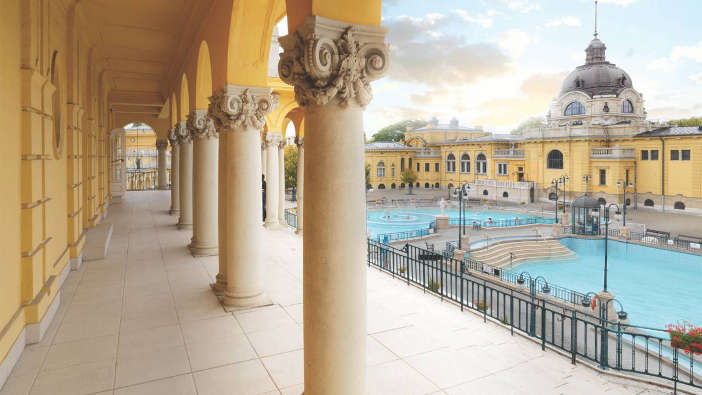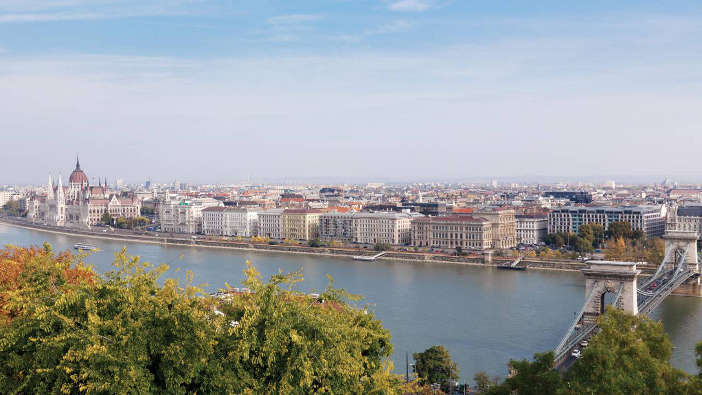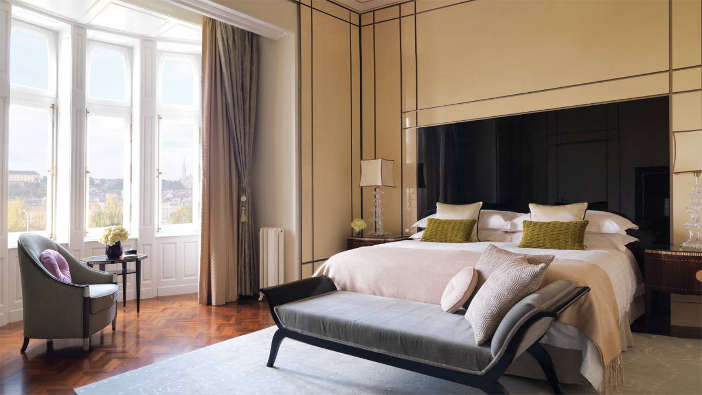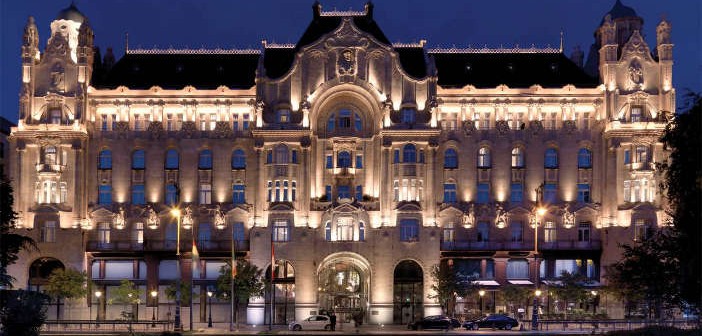It is night in Budapest. Wrapped in my bathrobe I gaze out over the Danube from my hotel window. Below me, the Chain Bridge stretches out illuminated and resplendent.
By the time the Danube reaches Budapest it is exotic and otherworldly. In Bavaria it is sprightly and agile and in Vienna it is elegant and noble, but in Budapest, its wide, languid march through the Hungarian capital is oneiric, and magical.
In this way, I’ve always found the Danube to be a curious river. It’s as if it reflects, or perhaps influences, the atmospheres and moods of the towns and cities that are nestled along its banks. In Budapest, that atmosphere is a dark, passionate, enticing grandeur. With strident influences from the East in its food and its baths; the peculiar and idiosyncratic nature of its language, unlike anything else in Europe; and the splendor of its ancient, erstwhile Empire – it is a seductive, and beguiling place.
The hotel I’m staying at is the Gresham Palace, the Four Seasons property in Budapest. It is undeniably the most luxurious hotel in the Hungarian capital. Completed in 1906, the palace was commissioned by the London Gresham Life Assurance Company at a time when investment in Hungary was promising, but stocks were illegal.

At the turn of the 20th Century Hungary and Budapest held vibrant and enticing opportunities. Nationalist stirrings in the late 19th Century had re-asserted the importance of Hungary as a nation within its union with Austria, and to foreign investors, Hungary was going up in the world. Yet little did anyone know that the First World War would fetter the ambitions of this proud country and leave it as it still stands today – frozen in a bygone age of grandeur and splendour.
That grandeur can be seen everywhere you go. Stroll down Andrassy Utica and you will see Art Nouveau palaces and mansions still left abandoned and derelict. The render peels away from the walls, and the windows are vacant. Compared to Vienna, it is clear how far Budapest fell after those glorious days of the Belle Époque.
Given the ubiquity of such sorrowfully miskept splendour, you wonder how the Gresham Palace has maintained its magnificence. From the outside the building is the quintessential Art Nouveau palace. Intricate, gilded designs are etched into the palace’s façade, and its curved sills lend a sensuous femininity. As a whole, the building has a confident majesty in its commanding position directly opposite the Chain Bridge. Indeed, one wonders how such a glorious building remained in tact during communism.

The fact is, it didn’t. One of the most astonishing things about the Gresham Palace is that almost the entire hotel has been reconstructed from the shell of the original building after it was left dilapidated when the Soviets trashed it upon their conquest of Hungary. The palace remained in a state of decay until the fall of communism in 1990.
Today, however, almost everything within the hotel, from the heart-shaped floor displays in the lifts, to the high-ceilinged rooms and umber, marble bathrooms has been refashioned and remoulded according to the modes and fashions of the Art Nouveau.
The result is a modern, luxurious hotel that makes you feel at once both awed by the glories of the past, and content in the comforts of the now. The spa at the top of the hotel is well equipped and offers various first-rate treatments. The hallway is capacious and monumental with leaded windows in the ceiling casting a mellow lustre on the atrium floor. The rooms are elegant and gracious, while the undulating patterns and motifs throughout the hotel intensify the hotel’s sense of dream-like voluptuousness.
The restaurant too is excellent. Breakfast is a feast – the eggs benedict with truffles in particular are a fine start to a morning in Budapest – and the tasting menu combines a fresh approach to ingredients and flavours whilst maintaining a respect for traditional Hungarian cuisine. Tastes of the wild Hungarian forests were on offer when we visited – a dark, intense wild mushroom and wild boar spaghetti and a delicate yet robust roasted loin of venison were particular highlights.

The greatest revelation of all, however, was the wine. Who would have thought Hungarian wine was so good!? Of course Tokay is known the world over, but we had a rich Cabernet Sauvignon from Southern Hungary and a beautiful, marble-like speciality from Lake Balaton, which were exotic and full-figured.
But although the Gresham Palace has all the conveniences and comforts of a modern luxury hotel; its nostalgia, veneration, and seeming longing, for that erstwhile age is patently clear.
I wonder why we’re still caught in the grasp of that age; perhaps it’s because it feels lost to us now. Wes Anderson’s most recent film reflects on the period between the two world wars as a lost era, to which we can never return; and I think there’s something in that. The heady mix of refinement, decadence, and idealism of that period was a turning point between the Utopian values of Old Europe and the post-modern pragmatism of New Europe. We know we can never return to it.
At the Gresham, however, a piece of Old Europe survives; not as a decaying relic, with ancient stucco peeling from the walls, but as a modern, palatial reinvention. A stay there is a supreme indulgence; a chance to indulge in dreams, ideals and fantasies. It is the grandest Budapest hotel.




